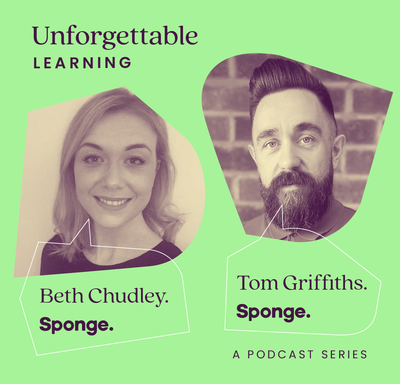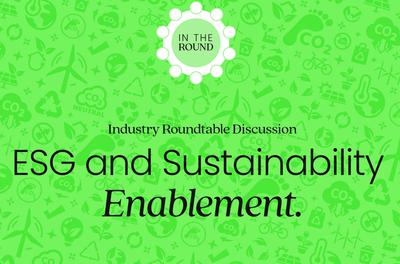10 strategies to personalise learning at your organisation.

In a world where online shopping items are suggested to us due to our past choices, adverts target us based on our search history, and playlists are recommended to us because of our most played songs, personalisation has become an integral part of daily life. But how does this apply to digital learning? And how can we implement personalised learning in the most beneficial way for our learners and organisation?
Why personalised learning matters.
Personalised learning offers an array of benefits that make it a compelling approach. First and foremost, it enhances engagement. By catering to the specific needs and interests of each learner, personalised learning makes the content more engaging and relevant. When learners find that the material aligns with their unique learning needs, they are more likely to stay motivated and deeply interested in their educational journey.
Moreover, personalised learning contributes to improved retention and understanding. By assessing learners upfront and tailoring content to their prior knowledge, personalised learning fosters enhanced comprehension and retention of information. Learners can concentrate their efforts on areas where they need improvement, leading to a deeper and more lasting understanding of the material.
Another significant advantage of personalised learning is the potential for faster learning. This approach allows learners to bypass topics they already understand and dedicate more time to areas they find challenging. The result? Quicker progress through the material and the ability to accelerate the learning process. It also ensures that learners' time is focused where it is truly needed.

Create confident learners with efficient learning.
In addition to learning speed, personalised learning boosts learners' confidence and overall satisfaction. When learners can track their own progress and achievements, it bolsters their confidence and creates a more satisfying learning experience. Personalised feedback and adaptive content play a vital role in fostering this sense of accomplishment. Personalised feedback can involve tailored responses to questions and decision points, while adaptive content includes branching scenarios that adapt to the learner's progress.
From an organisational perspective, personalised learning offers more efficient resource utilisation. Rather than delivering a generic, one-size-fits-all curriculum, it focuses on aiding individual learners where they need it most, reducing redundancy and inefficiency in the learning process.

10 tools for implementing personalised learning:
To effectively introduce personalised learning in your organisation, several strategies can be considered.
1. Learning paths and assessments.
The first strategy is to establish learning paths and assessments. This entails evaluating each learner's existing skills and knowledge and creating customised learning journeys that target their specific gaps and goals. By personalising the learning journey, learners receive content that is directly relevant to their individual needs.
2. Adaptive learning platforms.
Another valuable strategy involves investing in adaptive learning platforms. These platforms employ algorithms to adjust the difficulty and content of courses based on a learner's progress. They continuously assess a learner's performance and adapt the material to keep learners engaged and challenged at an appropriate level.
3. Mentorship and coaching.
Personalised learning can also benefit from mentorship and coaching. Pairing learners with mentors or coaches who provide one-on-one guidance and support can be highly effective. These mentors help learners set personalised goals, answer their questions, and offer feedback tailored to individual needs. This human touch adds a valuable dimension to personalised learning.
4. Microlearning modules.
Microlearning modules offer flexibility and cater to individual preferences. Developing a library of microlearning modules that cover a wide range of topics allows learners to select what they want to learn and when they want to learn it. This flexibility empowers individuals to access information that directly aligns with their job roles and interests.
5. User-generated content.
Additionally, encouraging user-generated content can be highly beneficial. By creating platforms or forums where learners can share their knowledge and experiences, you add a personal touch to learning and leverage the expertise within your organisation.

6. Feedback mechanisms.
Collecting feedback through mechanisms such as surveys or feedback forms is another essential strategy. This enables learners to express their preferences and needs, providing valuable insights into which topics and formats resonate with your audience. This input allows you to tailor content more effectively.
7. Data analytics.
Furthermore, data analytics can be a powerful tool for personalisation. By tracking learner progress and preferences and analysing this data, you can identify patterns and trends in learning behaviours. This information can help you refine personalised learning strategies over time.
8. Gamification.
Adding a gamification element to the learning experience by awarding badges or rewards for completing modules or reaching specific milestones is another strategy to consider. These personalised incentives motivate employees to engage with the content and enhance the learning experience.
9. AI-driven content curation.
Using artificial intelligence (AI) for content recommendations based on a learner's past interactions and interests can also greatly enhance personalisation. AI-driven recommendations help learners discover relevant content they might not have found on their own.
10. Personalised learning plans.
Finally, involving employees in the creation of personal learning plans is a collaborative approach. These plans outline their learning objectives, preferred learning methods, and resources needed. By involving individuals in their learning journey, you ensure that the experience aligns with their goals.

Conclusion.
The ten strategies outlined in this blog post are a great way to start boosting the relevance of learning at your organisation and keep your learners engaged. From an organisational standpoint, the efficiency gains are substantial. Personalised learning eschews the one-size-fits-all approach, directing resources precisely where they are most needed. This strategic focus minimises redundancy, ensuring that each learning initiative is a targeted step toward individual and collective proficiency. Meanwhile, your learners will feel valued and have the chance to progress both personally and professionally thanks to learning that feels tailored to them.
Laura
Hall.
Laura is a Learning Experience Consultant at Sponge with over 15 years’ experience in digital training design. She specialises in designing innovative, human-centred, creative solutions, backed up by learning science, that have a long-lasting impact on learners. She’s passionate about working closely with clients to define their overall needs and subsequent learning experiences that make a real difference to their organisation.




